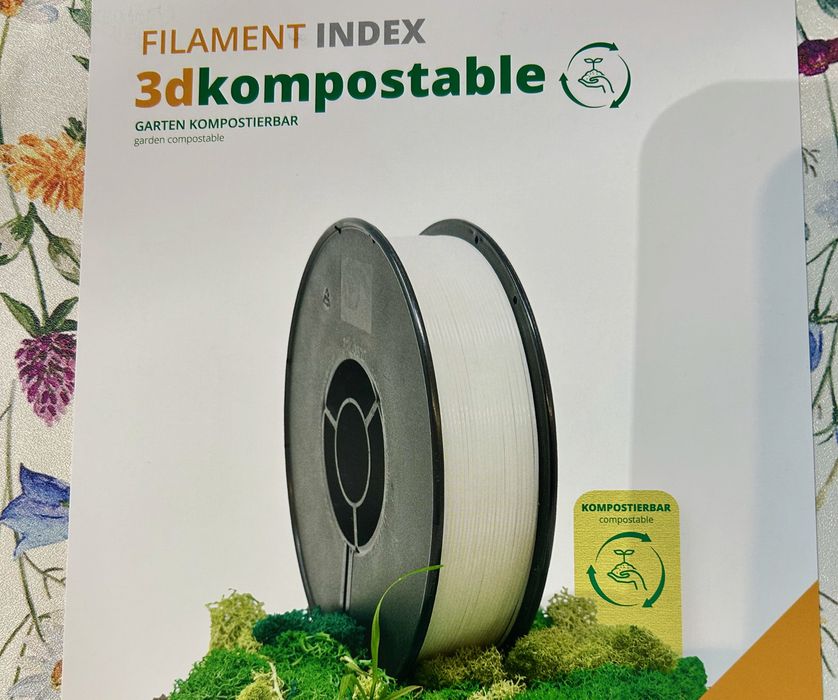
3dk.berlin has developed a “garden compostable” 3D printer filament.
The ten-year old company was a spinoff from a large plastics manufacturer, carrying forward considerable knowledge of polymers. Since inception, the company has produced a huge array of filament products for our industry, including over 100 different PLA color variations. They also offer a variety of specialty filaments with properties including conductivity, thermal resistance, bio filament, dental filaments, and even one that’s transmissive to infrared light.
But today we’re going to talk about their latest innovation, the “3dkompostable” filament.
Let’s first review the current state of sustainability regarding the filament typically used for desktop 3D printing: PLA. This material is popular because it warps far less than other materials and can be printed at reasonable temperatures. It also can be made from non-fossil bio sources, making it partially sustainable.
While PLA has excellent print properties and is sourced organically, its ability to be disposed of has much to be desired.
It is possible to recycle PLA, but this is not commonly done because the color is often important and that’s corrupted when mixing random PLA scraps for recycling. Mainly due to shipping effects, PLA recycling generally is not available anyway, and the landed cost of new PLA filament is sometimes less than recycled equivalents.
Even though PLA is sourced from organic ingredients, it is not naturally decomposable. It can be broken down in expensive high temperature / pressure furnaces, but those are simply not economic to set up for the relatively small amount of PLA in the industry.
One experimenter buried PLA prints in a garden to see if they would decompose over the course of a year, and the experiment showed no degradation. PLA is basically eternal.
As a result desktop 3D printer operators tend to accumulate piles of PLA scraps and prints that, with no other feasible and accessible alternative, end up in the local landfill. There they slowly break down into microplastics that pollute and poison our environment.
There has been no easy way around this issue, but last week I saw something that just might solve the problem. 3dk.berlin’s new “garden” compostable filament could be what we’re all looking for.
The new filament is a PHA variant, a material that has previously been used by some 3D printer operators. According to company representatives, the material will indeed gradually decompose if buried in a landfill, garden or compost box. That’s precisely what many 3D printer operators would want in a sustainable filament.
However, switching the industry from deep-rooted PLA to PHA might be quite challenging. The constant stream of newcomers have typically heard of only PLA, and that’s what they’ll use.
My hope is that products such as this new filament from 3dk.berlin will eventually catch on with the majority and become a standard material for desktop FFF 3D printing.
Via 3dk.berlin
